Wild Flor
Wild Flor Hove East Sussex
Storm Elin had blown us along a decidedly wintery Church Road, past the parade of Hove’s steamy-windowed hostelries and against the tide of Christmas revellers some aglow with Yuletide bonhomie, others bleary-eyed already after one too many cocktails, one too many seasonal broken hearts. Tonight, the welcoming lights of our destination seemed truly charmed as we closed a relieved door on the gusty mayhem outside.
Opened by James and Faye Thomson with Rob Maynard in 2019, Wild Flor is a brasserie in the best tradition of the word. It’s a term that rather lost its sparkle under the onslaught of ‘90s chains who reimagined it as an excuse for bland uniformity. But here, it harks back to essentially French roots, naming a place of good food, intelligently conceived and honestly executed from a short, to-the-point menu.
It should indicate an establishment that understands seasonality as key to proper eating at a fair price, too – a simple equation but one often forgotten in the scramble for rosetted and starred adulation. Wild Flor’s December menu reflected this traditional approach perfectly with nods to the seasonal table – goose, turkey, chestnuts and sage for example – handled with an unseasonal lightness of touch and seasoned with creative flair to boot.
Warmth of welcome is another essential brasserie feature: unobtrusive, solicitous service that is informal and comforting. Genuine friendliness radiates from the staff at this end of Church Rd, the kind that can only come from natural charm underpinned by a consummate grasp of the art of the professional host. It’s a dog-friendly place, too. And in a way that evinces heart-felt feelings rather than barely tolerant Barbara Woodhouse sensibilities.
Inside, the dining room is all wooden tables, exposed brick and blackboard specials. Familiar – comfortingly so – but also with a glint in its eye that promises something different, something a cut above. A couple of well-behaved dogs lay snoozing under tables but if that’s not your scene have no fear as there are tables specially allocated to the pooch brigade so those less canine friendly types can feast with impunity. Thoughtful, for all concerned. The human clientele, nicely eclectic, ranged from the goodly bourgeoisie feasting with scarce a thought to January credit card statements to younger couples quietly calculating if they could afford the better of the orange wines on offer. Nice, easy, convivial. Perfect for an old friends' get together (table to our left) or a romantic supper à deux (to our right). It even suited the odd jobbing gourmand gaily eating through as much of the menu as possible with Grüner Veltliner in one hand and dog lead in the other.
Menus were flourished with obvious pride. A pleasingly concise food menu and a wide-ranging wine list: exactly as things should be. “Snacks” were the first thing to attract our attention. Although it seems simple, homespun even, the cheese gougère is a tricky thing to master. Get it wrong and it has all the glamour of a supermarket profiterole – only filled with dismal cheesiness that would, quite literally make a cow laugh. Cheese can be a bit of a gamble as an opening number, in any case. The Americans are, in my opinion wrongly, obsessed with vast cheese-board appetisers. Such an umami onslaught can tire the palate before you’ve even begun. If it’s handled right, though, and in small enough quantities, the acidic hit and savoury hum of cheese can indeed whet the appetite. Cue excellent Wild Flor choux creations – crisp but yielding carapace and perfectly judged meltiness of decent-cheese credentials. Lovely, with the added piquancy of being slightly retro, if not downright unfashionable.
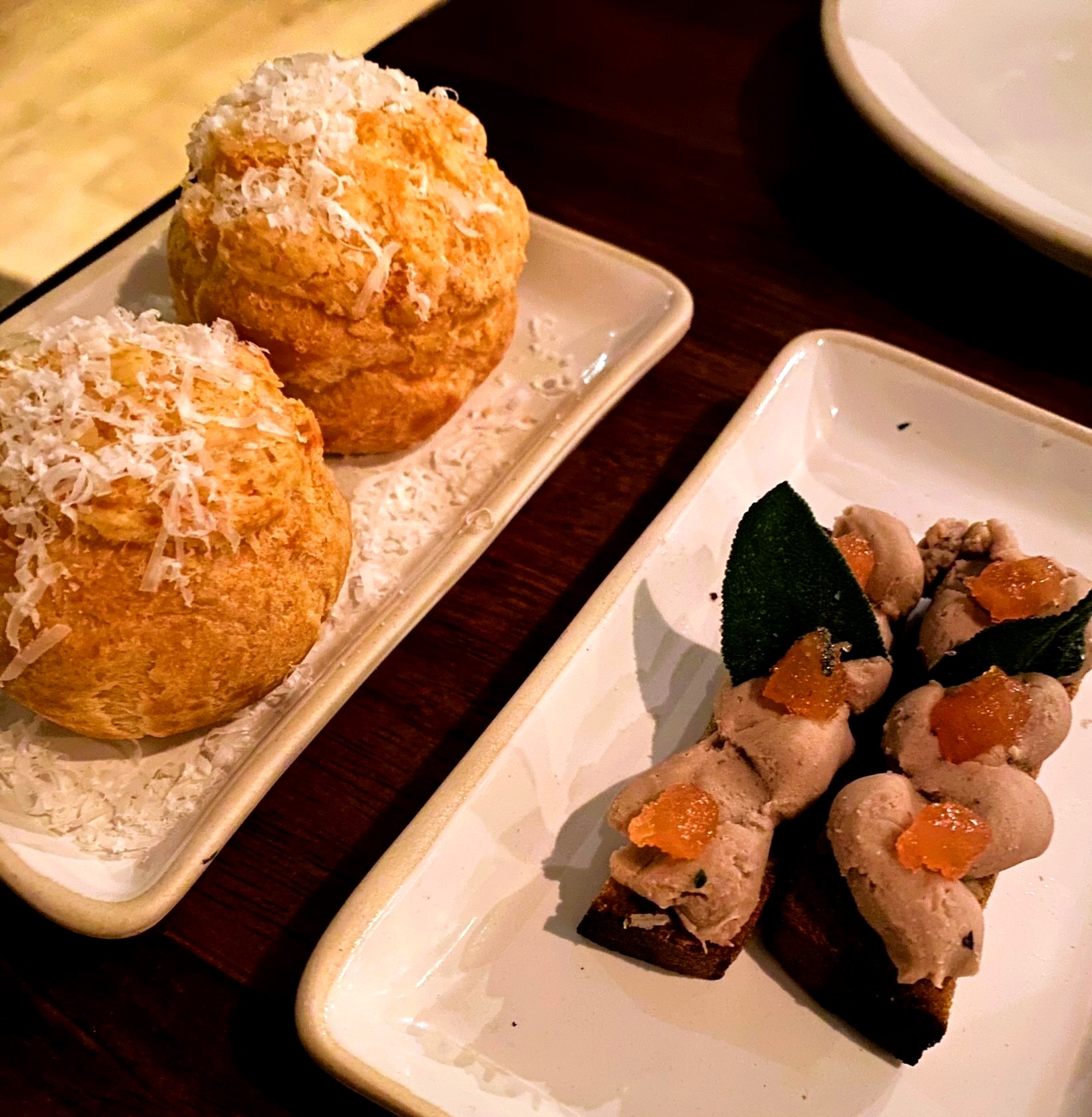
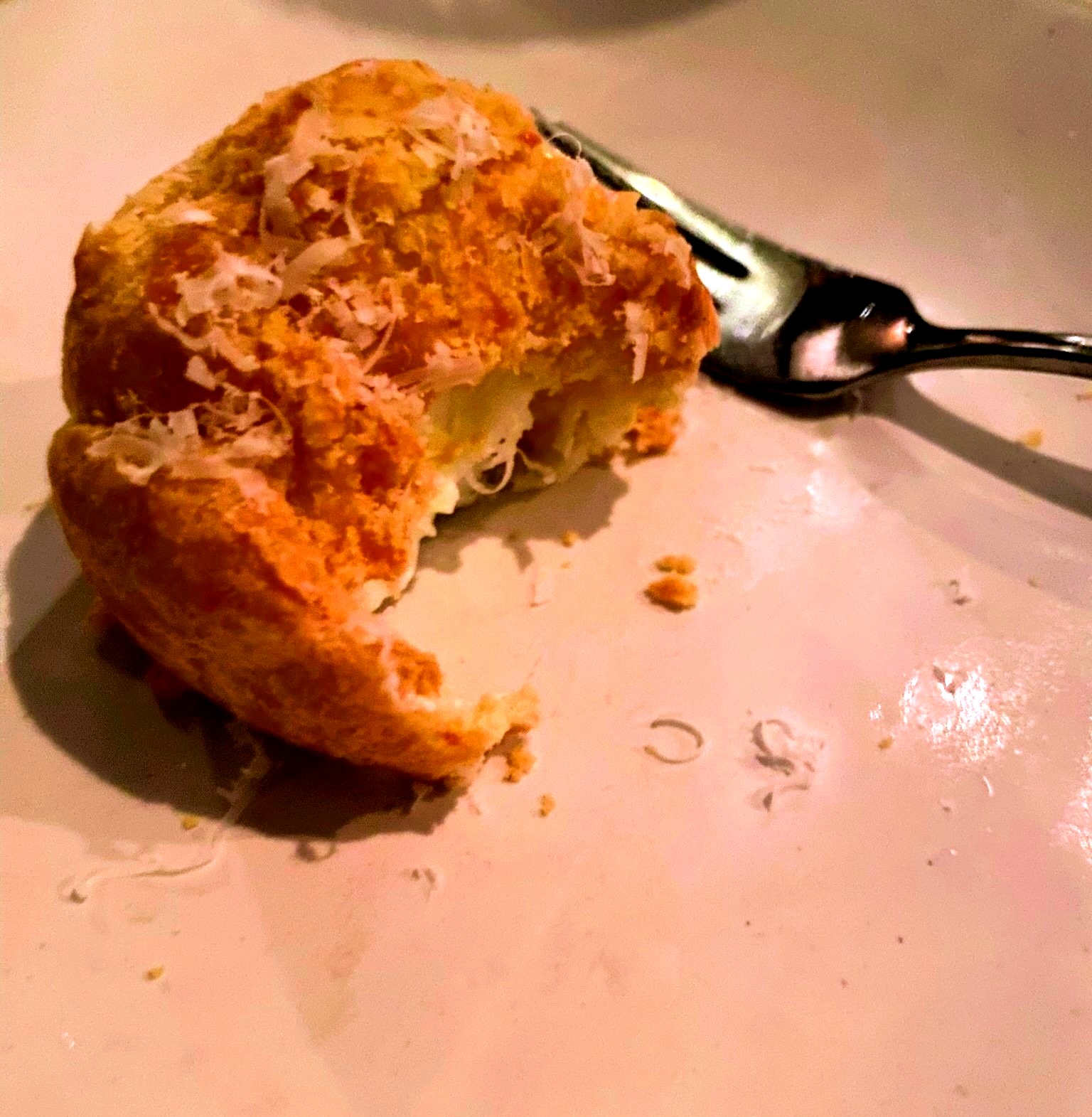
A second snack came in the form of an interesting chestnut number on pumpernickel – much more à la mode and virtuously “Pb” as the menu proclaimed (plant based, as I later worked out). It was tasty if somewhat lacking in the looks department. Heston Blumental famously gets round the problem by coating his similarly dun chicken-liver confection, Meat Fruit, in a natty coat of neon clementine jelly. Here, the mouse is naked and unashamed, the pallor of its three-day-hangover greige only just offset with deft cat’s ears of sage and dabs of bejewelled membrillo paste. First impressions of its slightly outré looks were completely erased however by the taste: a delightful balance of sweet and savoury, with well-handled chestnut textures (an ingredient all too apt to resolve into arid dryness or perfumed putty in the hands of a lesser chef).
I wanted the goose rillettes with redcurrant as well, but three snacks seemed a step too far this close to the holiday season. Instead, we moved on to a starter of crab tartlet with salsify and Vacherin, in part as an excuse for a glass of Koehler-Ruprechet’s Riesling Spätlese 2018 (crab and Riesling are an old Hugh Johnson trick). Pure and saline whites are more typical with seafood, but I prefer a more expressive stone-fruited warmth with crab’s sweet and briny tang. And besides, the Alpine sheen of Vacherin had already beaten the path between the seashore and the resolutely continental German wine region (Pfalz, in this case) breaking, into the bargain, the oddly intransigent Italian prohibition against fish and cheese. I’ve never subscribed to this nonsense myself. And neither, universally, do the Italians. Open the pages of Accademia Italiana Della Cuccina’s encyclopaedic Regional Cooking of Italy and you’ll find plenty of Pecorino with Puglian gratinated mussels for example or cheese hiding in Calabrian anchovy balls. Here, the Vacherin added both seasoning and textural boon to the shards of filo tartlet and the moist filaments of crab within. A bold move and a delicious one.
We chose a gratifyingly substantial, pleasingly rustic slab of turkey, liver and apricot terrine to go with. Deeply meaty and mouth-filling, it was lifted by a glossy tangle of celeriac remoulade. Tasty and simple and done really well. Goodly sourdough and exemplary butter were a non-negotiable accompaniment.
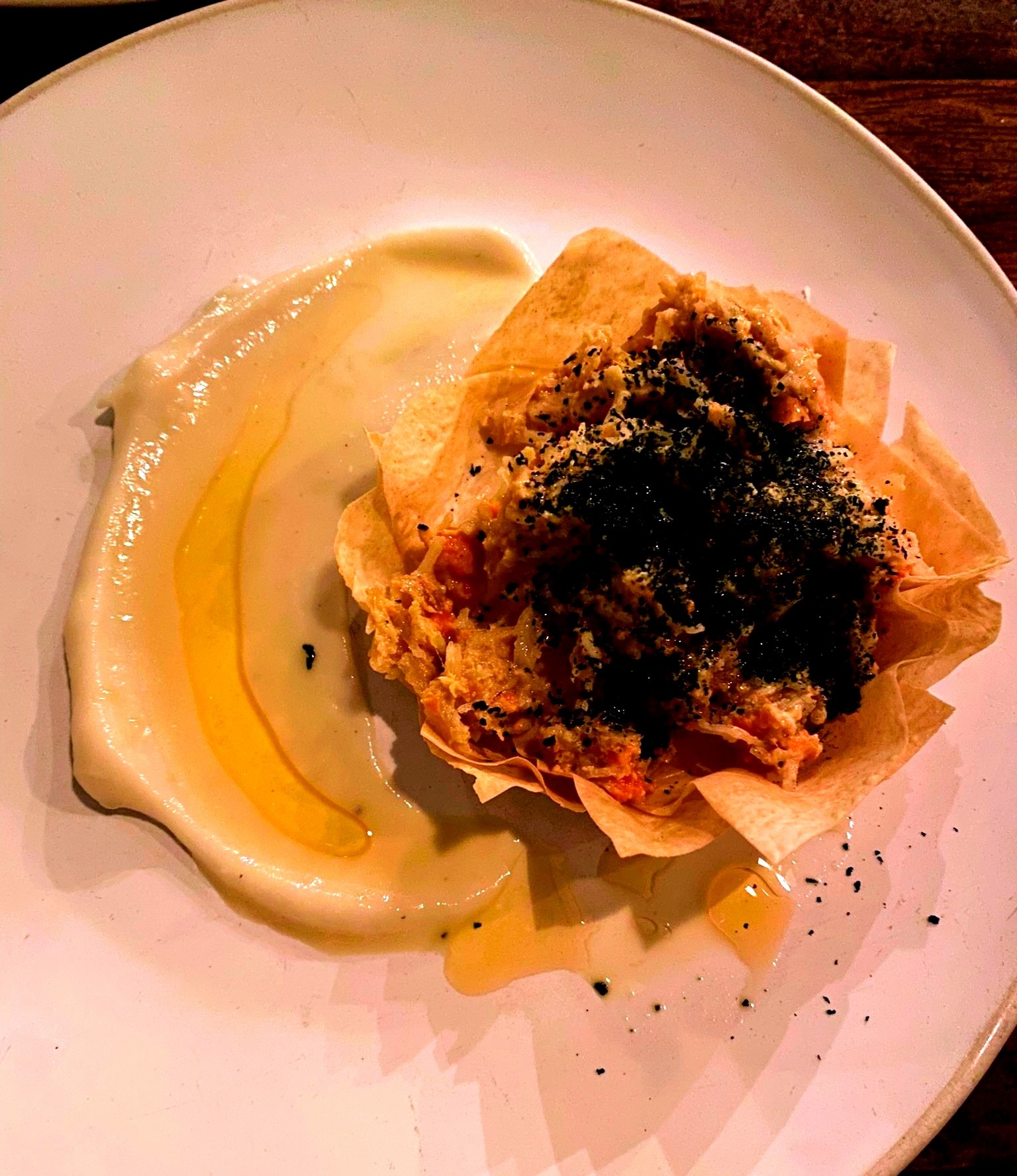
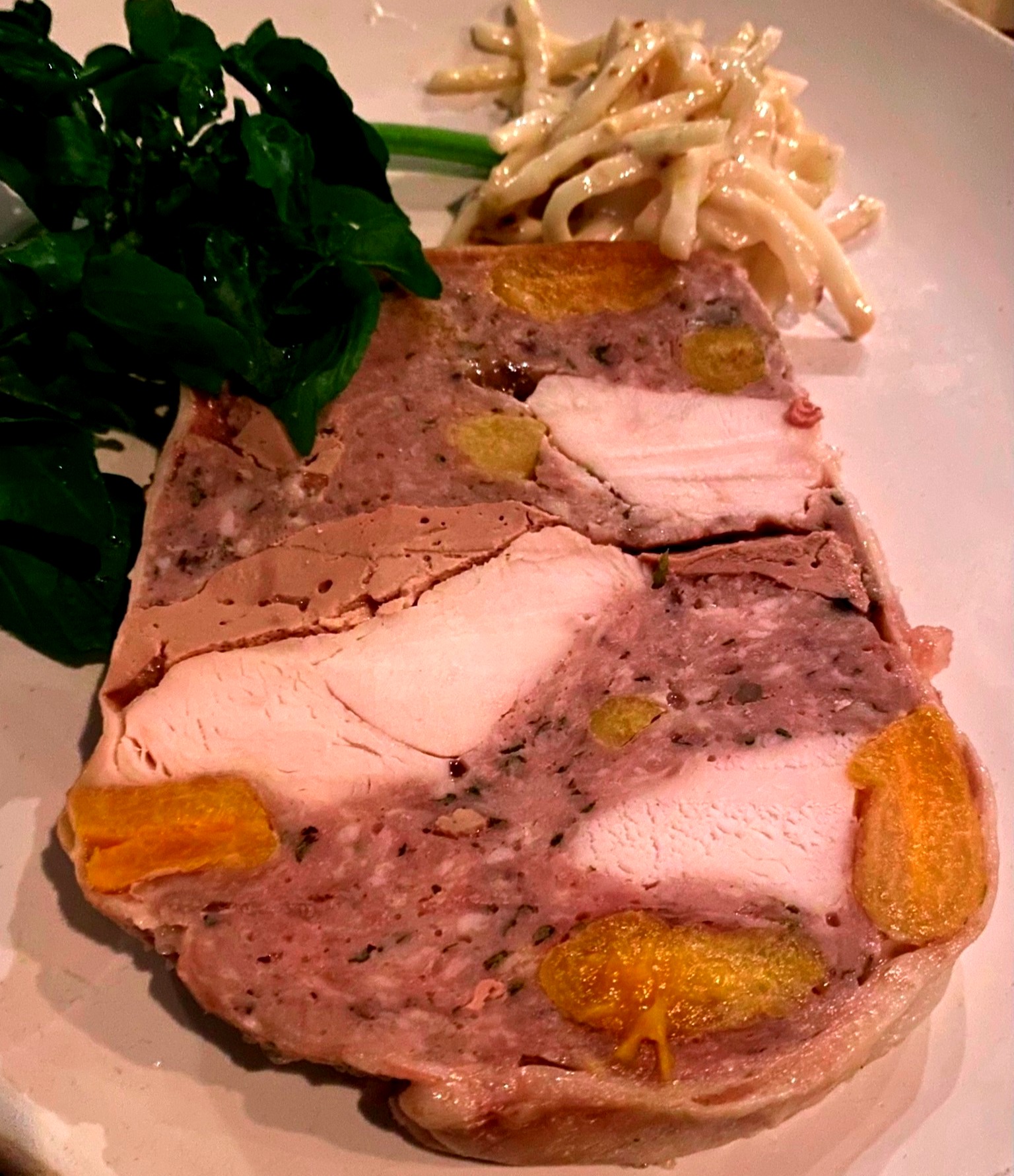
Veal chops are hard to resist when you find them on a menu but as we’d recently cooked some at home we left these peppercorn-sauced versions for our fellow diners. Other lovely main courses beckoned, too: venison and stout-roasted onions, sole with bottarga and such like. But it was the duck that finally won my vote – delightfully pan roasted, served with a modern take on a citrus sauce and confit parsnip (another echo of the Christmas feasting just around the corner). In some ways quite a simple dish – classic is perhaps a better term – it was hearty and comforting fodder elevated by the clever addition of the Italian, Sicilian even, chic of bitter radicchio and a sweet-spiced melange of golden raisins and caramelised onions.
Northern Italy gained a place at the table, too. Risotto is now such a familiar part of the home cook’s repertoire that it seems almost perverse to order it in a restaurant. Whilst I’m certainly not going to be de-boning chicken wings or toiling over shellfish reductions at home – and so happy to leave such things to the professionals – a risotto seems in easier reach of the domestic cook. Plus, restaurants are apt to give risotto too little love, too little attention and nowhere near enough butter. Or so I thought. I was pleased to be proved wrong by the black futsu squash risotto whipped up by Wild Flor. Without doubt one of the highlights of the meal, the cooking was spot on (to within the millisecond) and the dish incredibly flavoursome, not monotoned as risotto can be. The sage and smoked almonds strewn on top were a master stroke – deeply fragrant and a clever textural counterpoint to the rice’s nubbly silkiness. Bravo!
Side dishes weren’t strictly necessary, but it seemed rude to ignore something as promising sounding as artichoke and potato hash browns with crème fraîche. They turned out to be a sort of homage to caramelised roots, layered and butter-fried with a yielding, creamy underbelly and a fringe of refreshingly lactic proto-tartare sauce. Roots and indeed all things vegetal are given due respect at Wild Flor. Vegetarian, vegans and the properly vegetable-focused won’t go hungry or feel even a little disappointed. I didn’t see anyone order it (not even the couple by the window who looked as if they had resolutely Pb sympathies) but the meat-free main course sounded lovely: wild mushroom suet pudding with smoked oat sauce and truffle.
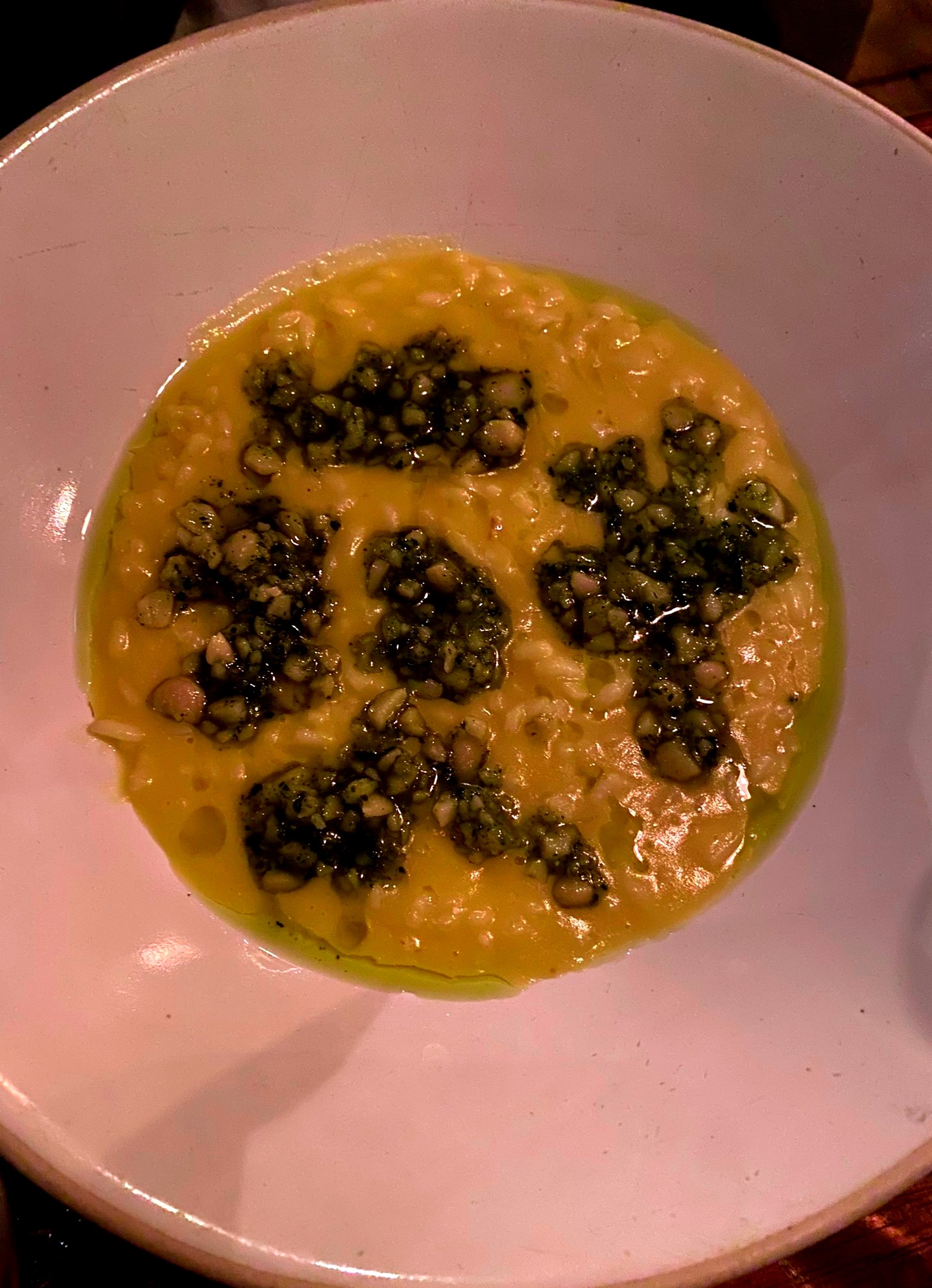
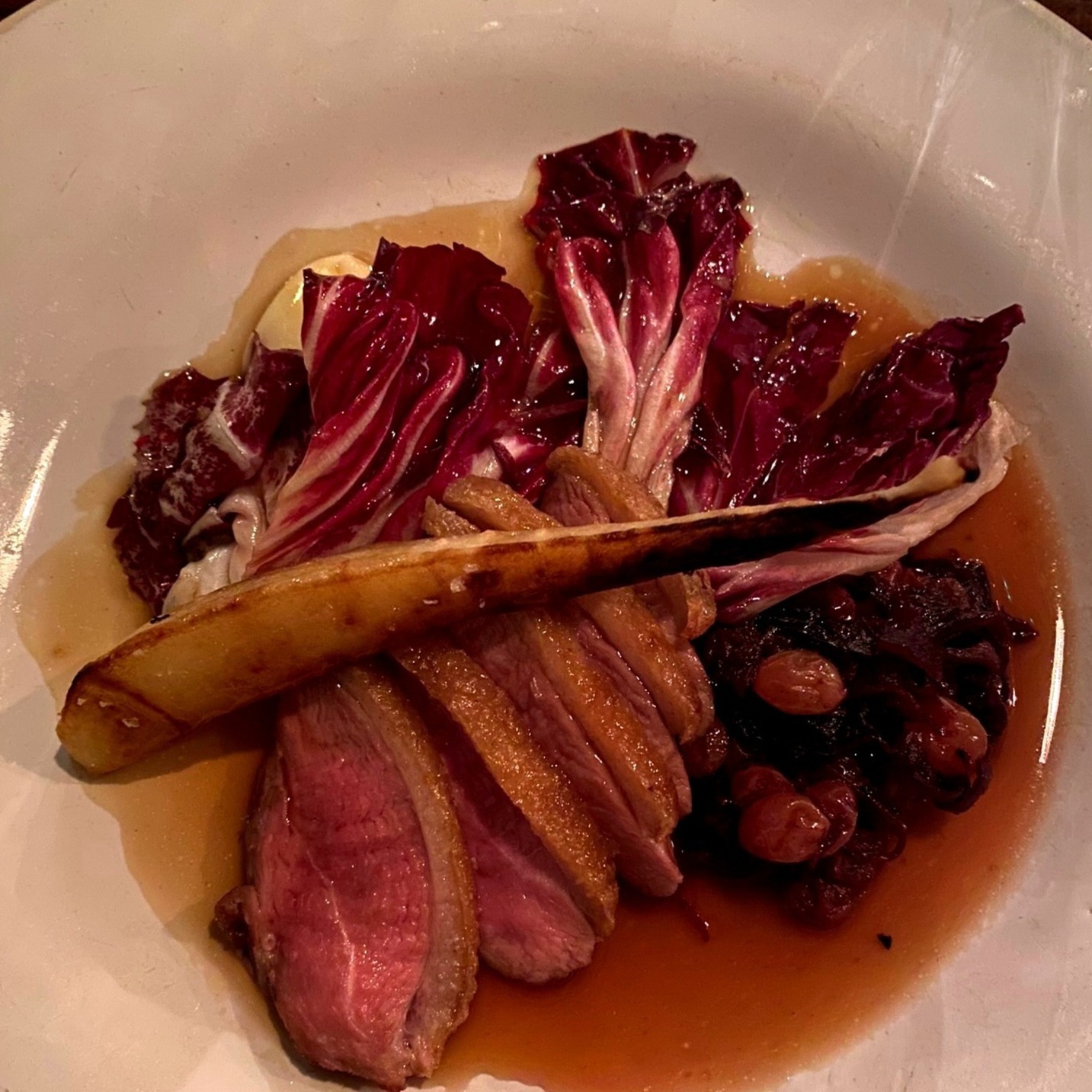
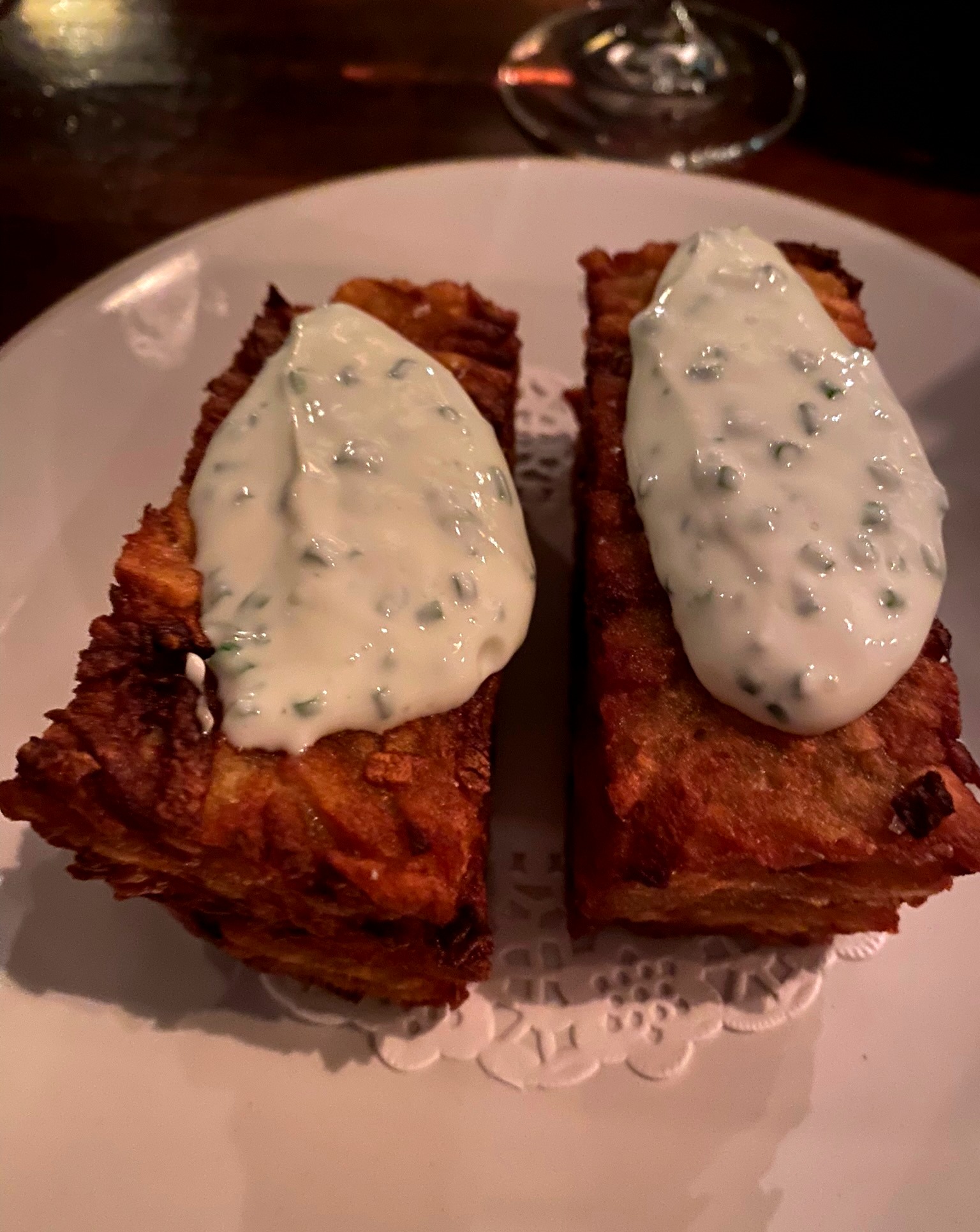
Three sweet puds were on offer that evening to finish us off. One was chocolate-based which seems sensible given that some folk become semi-riotous if not offered sweet things from the mousse/brownie/fondant stable. Here, it was the former: bitter choc matched with candied almonds. December feasting made its presence felt again in the form of a mince pie and Stichelton (Stilton’s wilder cousin). An interesting idea, but not quite enough to lure us from the promise of earl grey pannacotta with ginger biscuits. Pannacotta is another overly familiar dish that in the wrong hands is a ghastly, rubbery beast of a thing. This pannacotta was a completely different animal – with a wanton wobble only pure cooked cream can have, it was deeply and wonderfully milky, enlivened by a gingered syrup and served with two crisp biscuits of buttery-shortbread leanings. It was, I think, the second highlight of the meal and made me reflect again on just how good the classics can be when touched with the creative wand and realised with a skillful hand.
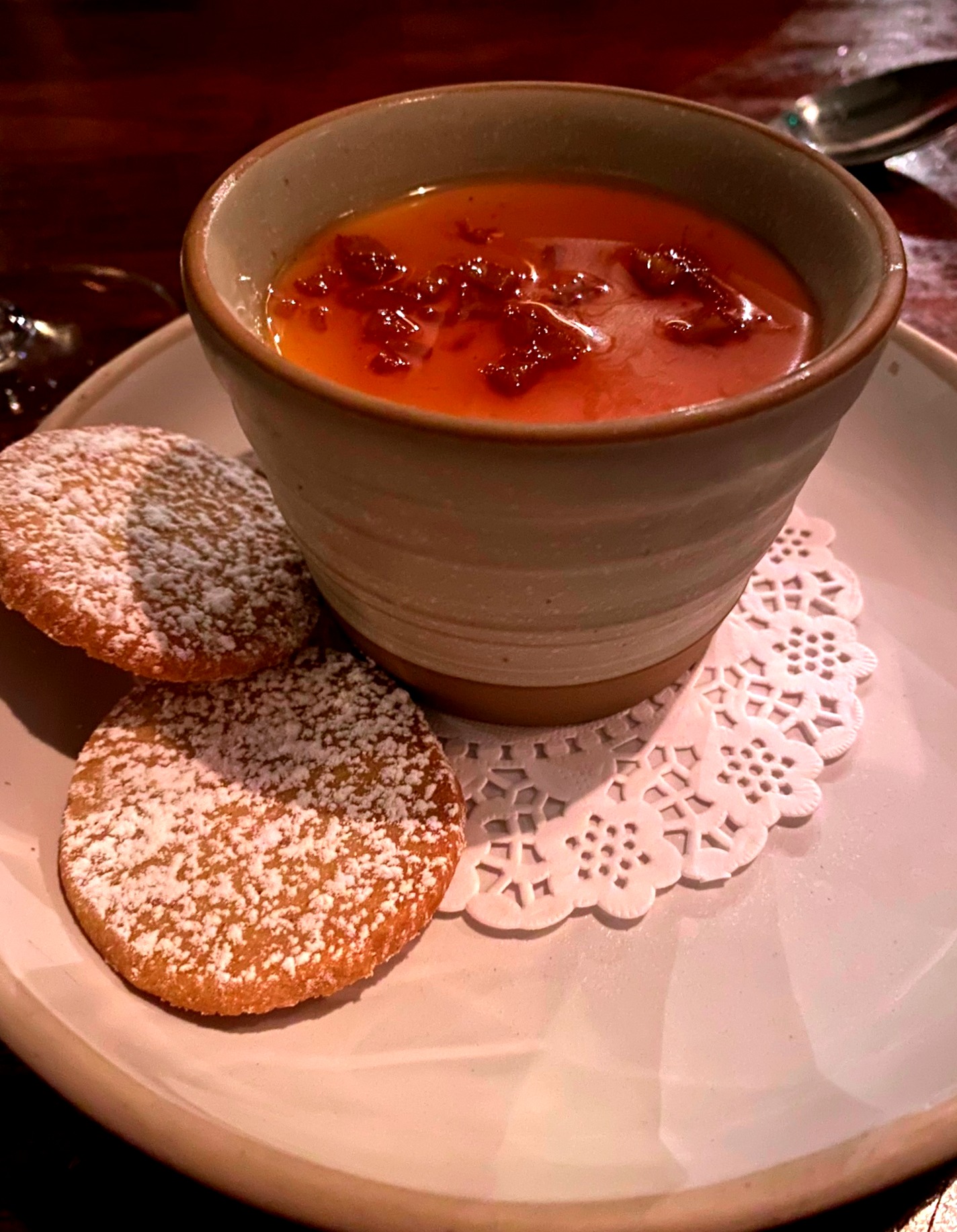
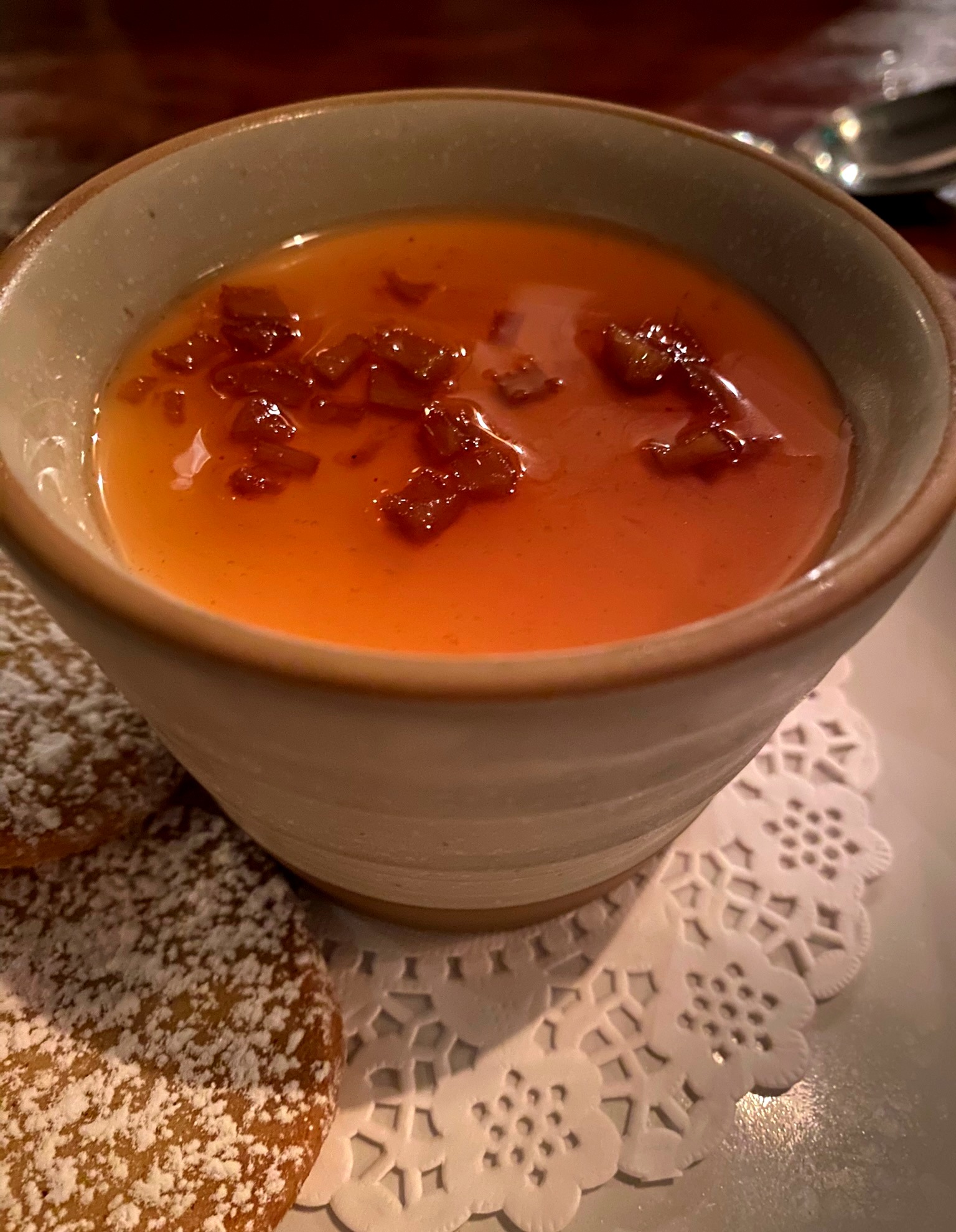
I wanted longer with the wine list whose breadth and depth promised to take me everywhere I wanted to go, up to and including a Riesling pudding wine. It’s an award-winning wine list, in fact, and good enough reason on its own to book a table. Plenty by the glass and the carafe (sensible folk) allows for vinous grazing. There was the refreshing but far from simple Grüner Veltliner from Christoph Bauer that did an excellent job of startling the tastebuds into action. The more Rubenesque charm of the Riesling with our starters was equally good. We followed it with some lovely Cabernet Franc in the guise of a Chinon from La Perruche. A good bit of Loire seasoning for the duck, it didn’t baulk at the risotto either.
Incidentally, if you are looking for somewhere for a good pre-dinner drink, then there’s a handy outpost of Brighton’s dark and sultry cocktail joint, The Plotting Parlour, a few doors down. A slightly more athletic stone’s throw will get you to The Gin Tub. I haven’t been there, I have to admit, but the name conjures up a more Hogarthian ambiance. Perhaps it was responsible for some of the red-eyed stumblers outside?